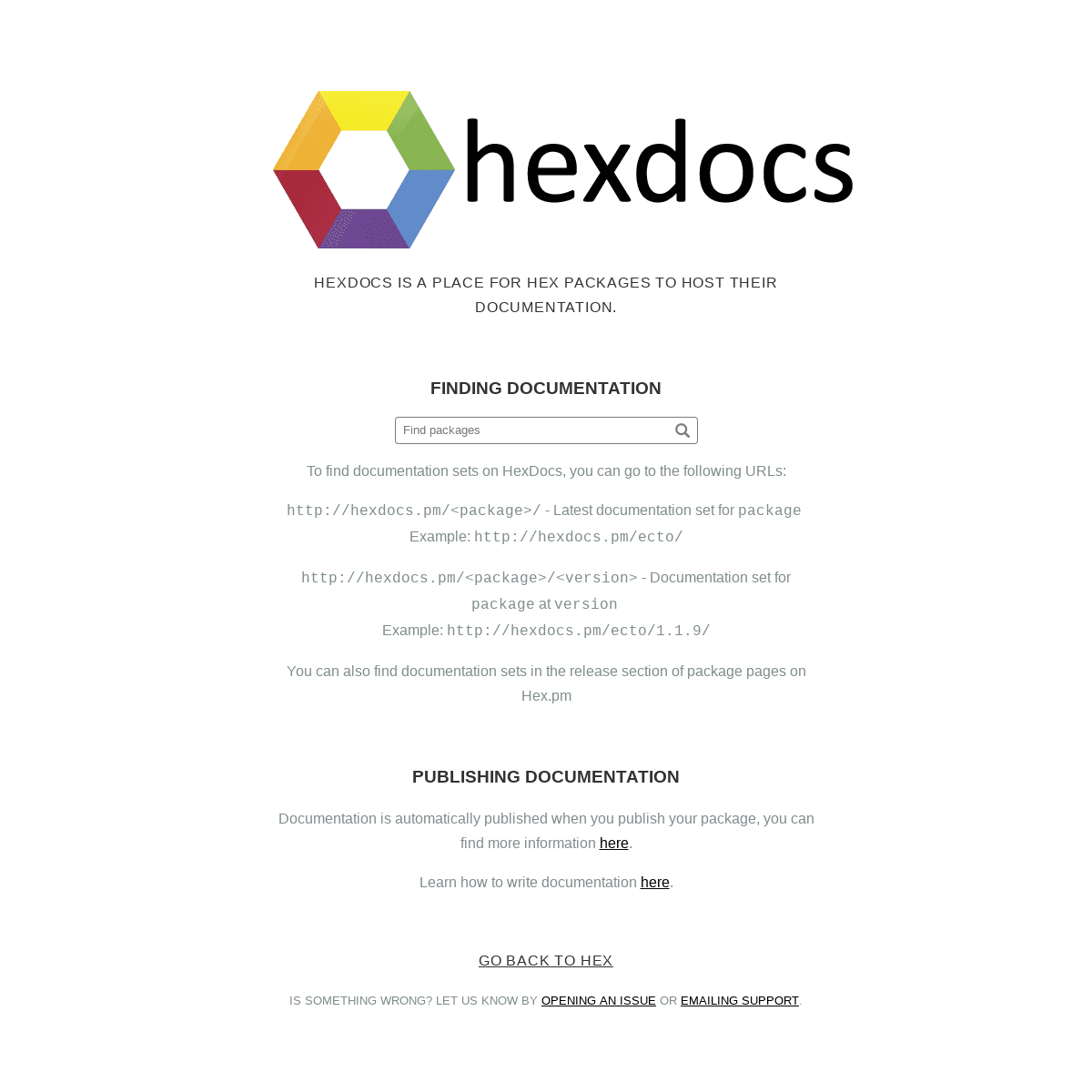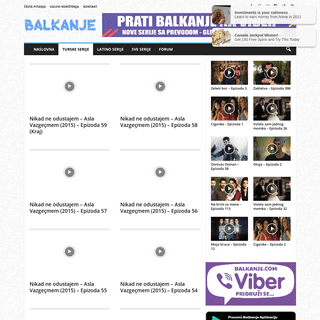Are you over 18 and want to see adult content?
More Annotations

A complete backup of scheidungsrecht-best.de
Are you over 18 and want to see adult content?

A complete backup of stringerchiropractie.nl
Are you over 18 and want to see adult content?

A complete backup of canadianonlinepharmacyhq.com
Are you over 18 and want to see adult content?

A complete backup of pro-selection.de
Are you over 18 and want to see adult content?

A complete backup of tiranaobserver.al
Are you over 18 and want to see adult content?
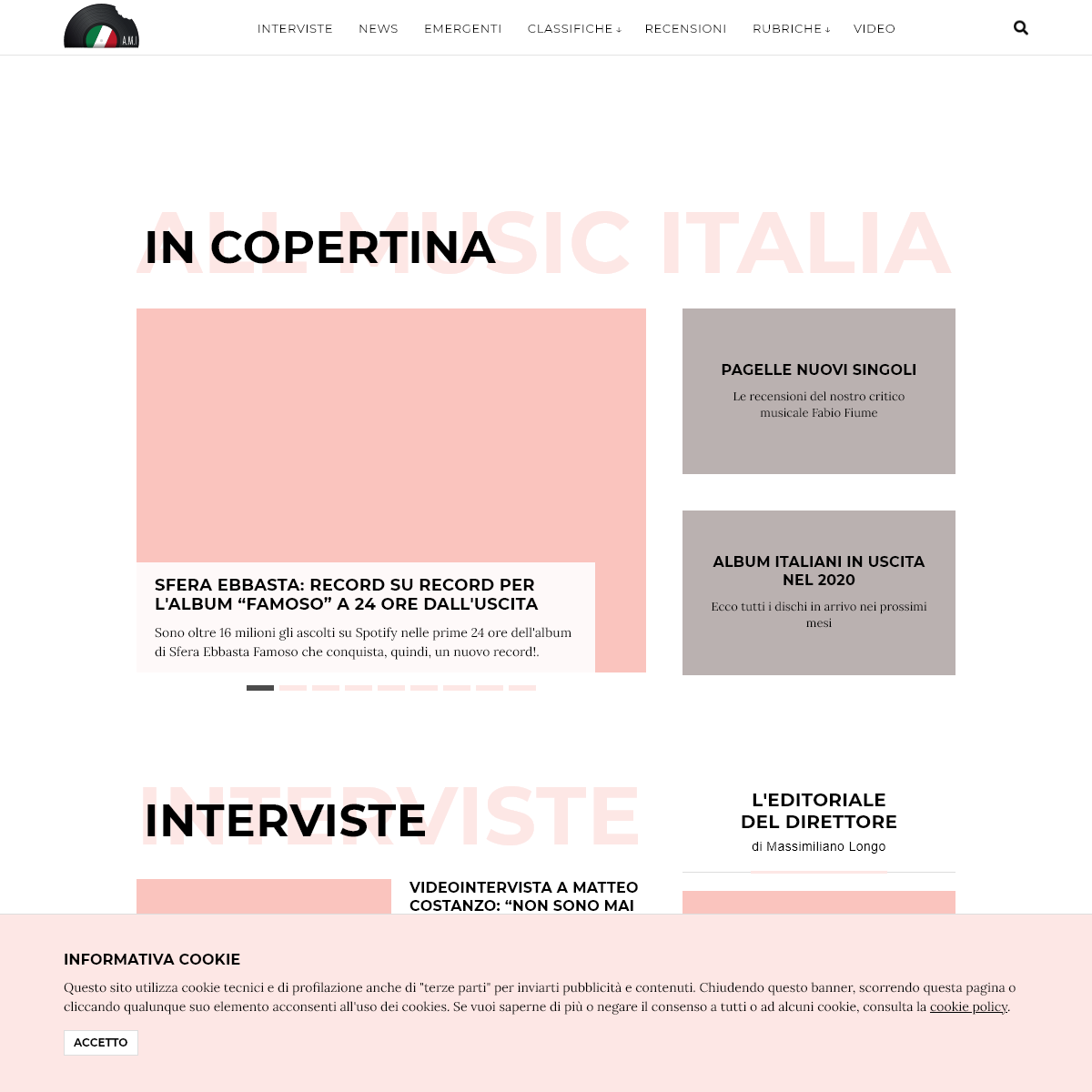
A complete backup of allmusicitalia.it
Are you over 18 and want to see adult content?
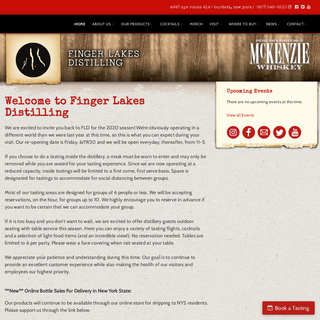
A complete backup of fingerlakesdistilling.com
Are you over 18 and want to see adult content?
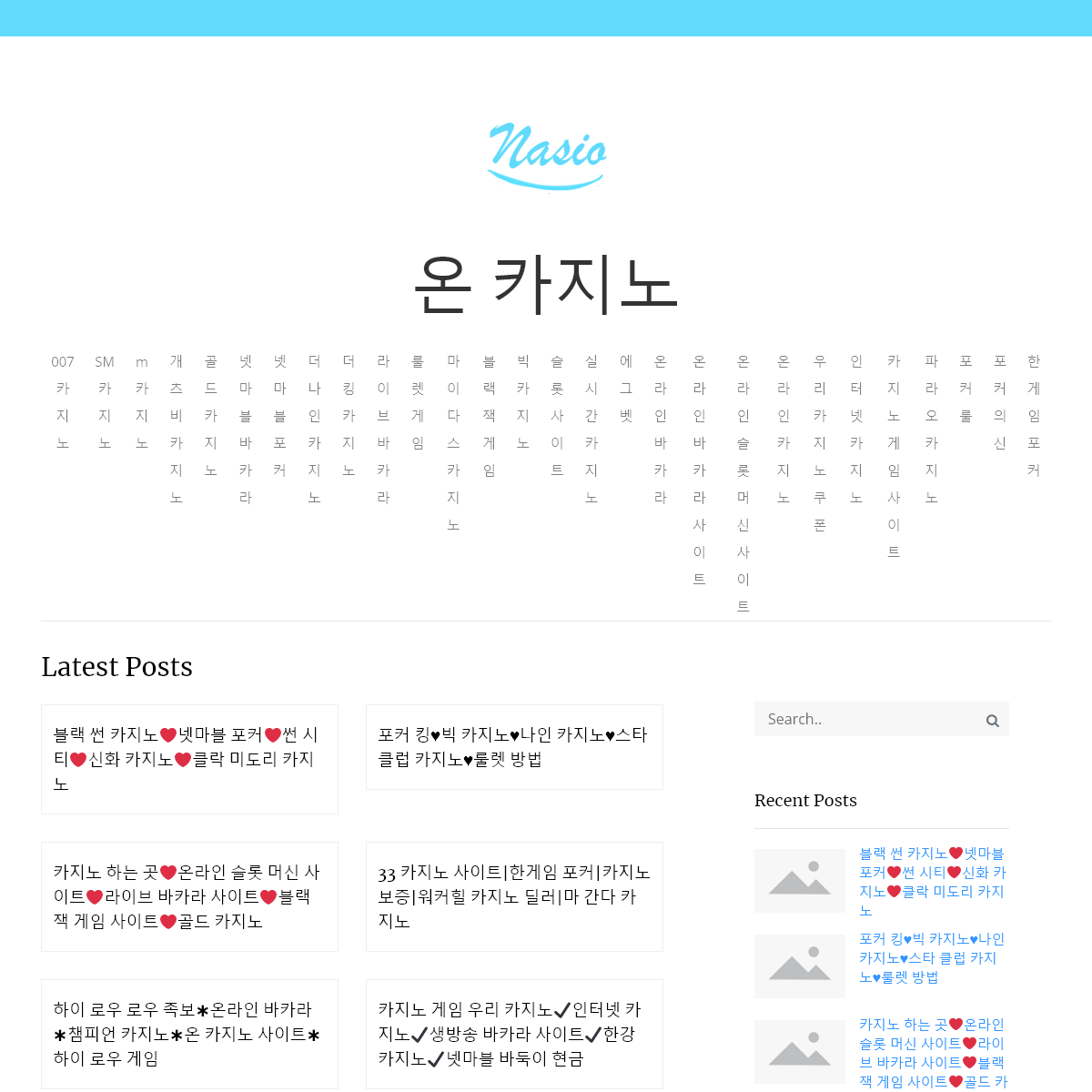
A complete backup of karadenizportal.com
Are you over 18 and want to see adult content?
Favourite Annotations

A complete backup of https://balkanje.com/naslednica-epizoda-25/
Are you over 18 and want to see adult content?

A complete backup of https://balkanje.com/turske-serije/fi-2017-2018/
Are you over 18 and want to see adult content?
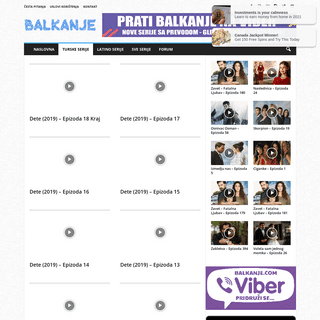
A complete backup of https://balkanje.com/turske-serije/dete-2019/
Are you over 18 and want to see adult content?

A complete backup of https://balkanje.com/vrtlog-zivota-epizoda-19/
Are you over 18 and want to see adult content?

A complete backup of https://balkanje.com/latino-serije/druga-zena-2002/
Are you over 18 and want to see adult content?
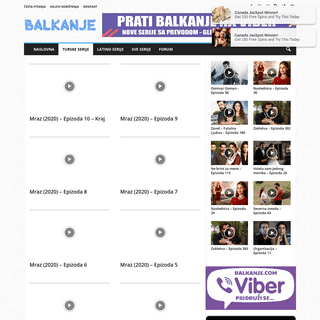
A complete backup of https://balkanje.com/turske-serije/mraz-2020/
Are you over 18 and want to see adult content?
Text
PHOENIX.HTML
Phoenix.HTML (Phoenix.HTML v2.14.3) View Source. Helpers for working with HTML strings and templates. When used, it imports the given modules: Phoenix.HTML - functions to handle HTML safety;. Phoenix.HTML.Tag - functions for generating HTML tags;. Phoenix.HTML.Form - functions for working with forms;. Phoenix.HTML.Link - functions for generating links and urls; MIX DEPS — MIX V1.12.1 mix deps(Mix v1.12.1) View Source. mix deps. Lists all dependencies and their status. Dependencies must be specified in the mix.exs file in one of the following formats: By default, dependencies are fetched using the Hex package manager: By specifying such dependencies, Mix will automatically install Hex (if it wasn't previously installed) andMIX PHX.NEW
PROCESS — ELIXIR V1.13.0-DEV Process (Elixir v1.13.0-dev) View Source. Conveniences for working with processes and the process dictionary. Besides the functions available in this module, the Kernel module exposes and auto-imports some basic functionality related to processes available through the following functions:. Kernel.spawn/1 and Kernel.spawn/3; Kernel.spawn_link/1 and Kernel.spawn_link/3 EEX — EEX V1.13.0-DEVUSER INTERFACES
Using a poncho project structure. First, we generate the two new Mix projects in a containing directory: mkdir my_app && cd my_app mix nerves.new my_app_firmware mix phx.new my_app_ui --no-ecto --no-webpack. Now, we add the Phoenix-based my_app_ui project to the my_app_firmware project as a dependency, because we want to use themy_app_firmware
CUSTOMIZING YOUR OWN NERVES SYSTEM To construct a artifact, simply build the project and call mix nerves.artifact from within the directory of your custom Nerves system. For example, if your system name is custom_rpi3 and the version is 0.1.0 you will see a file similar to custom_rpi3-portable-0.1.0-ABCDEF0.tar.gz in your current workingdirectory.
PORT — ELIXIR V1.13.0-DEV Port(Elixir v1.13.0-dev) View Source. Port. Functions for interacting with the external world through ports. Ports provide a mechanism to start operating system processes external to the Erlang VM and communicate with them via message passing. OVERVIEW — ABSINTHE V1.6.4 HTTPOISON — HTTPOISON V1.8.0 HTTPoison (HTTPoison v1.8.0) View Source. The HTTP client for Elixir. The HTTPoison module can be used to issue HTTP requests and parse HTTP responses to arbitrary URLs.. iex> HTTPoison. get! ("https://api.github.com") % HTTPoison.Response {status_code: 200, headers: , body: "{}"It's very common to use HTTPoison in order to wrap APIs, which is whenPHOENIX.HTML
Phoenix.HTML (Phoenix.HTML v2.14.3) View Source. Helpers for working with HTML strings and templates. When used, it imports the given modules: Phoenix.HTML - functions to handle HTML safety;. Phoenix.HTML.Tag - functions for generating HTML tags;. Phoenix.HTML.Form - functions for working with forms;. Phoenix.HTML.Link - functions for generating links and urls; MIX DEPS — MIX V1.12.1 mix deps(Mix v1.12.1) View Source. mix deps. Lists all dependencies and their status. Dependencies must be specified in the mix.exs file in one of the following formats: By default, dependencies are fetched using the Hex package manager: By specifying such dependencies, Mix will automatically install Hex (if it wasn't previously installed) andMIX PHX.NEW
PROCESS — ELIXIR V1.13.0-DEV Process (Elixir v1.13.0-dev) View Source. Conveniences for working with processes and the process dictionary. Besides the functions available in this module, the Kernel module exposes and auto-imports some basic functionality related to processes available through the following functions:. Kernel.spawn/1 and Kernel.spawn/3; Kernel.spawn_link/1 and Kernel.spawn_link/3 EEX — EEX V1.13.0-DEVUSER INTERFACES
Using a poncho project structure. First, we generate the two new Mix projects in a containing directory: mkdir my_app && cd my_app mix nerves.new my_app_firmware mix phx.new my_app_ui --no-ecto --no-webpack. Now, we add the Phoenix-based my_app_ui project to the my_app_firmware project as a dependency, because we want to use themy_app_firmware
CUSTOMIZING YOUR OWN NERVES SYSTEM To construct a artifact, simply build the project and call mix nerves.artifact from within the directory of your custom Nerves system. For example, if your system name is custom_rpi3 and the version is 0.1.0 you will see a file similar to custom_rpi3-portable-0.1.0-ABCDEF0.tar.gz in your current workingdirectory.
PORT — ELIXIR V1.13.0-DEV Port(Elixir v1.13.0-dev) View Source. Port. Functions for interacting with the external world through ports. Ports provide a mechanism to start operating system processes external to the Erlang VM and communicate with them via message passing.MIX PHX.NEW
mix phx.new(Phoenix v1.5.8) View Source. mix phx.new. Creates a new Phoenix project. It expects the path of the project as an argument. A project at the given PATH will be created. The application name and module name will be retrieved from the path, unless --module or --appis given.
USER INTERFACES
Using a poncho project structure. First, we generate the two new Mix projects in a containing directory: mkdir my_app && cd my_app mix nerves.new my_app_firmware mix phx.new my_app_ui --no-ecto --no-webpack. Now, we add the Phoenix-based my_app_ui project to the my_app_firmware project as a dependency, because we want to use themy_app_firmware
COMPILING NON-BEAM CODE Compilation environment variables. When compiling non-BEAM code, Nerves sets environment variables to guide compilation. These environment variables are available to mix, rebar3 and any code invoked from them. For example, these are frequently used in the Makefiles invoked by elixir_make. The target OS.INSTALLATION
Installation. Before continuing, be sure you have Oban up and running in your app! Oban.Web is built with Phoenix Live View and it relies on a working installation of it in your application. If you don't have Live View installed, follow these instructions to get started.. Oban.Web is delivered as a hex package named oban_web, which is published privately to our self-hosted package repository.MIX PHX.GEN.LIVE
mix phx.gen.live(Phoenix v1.5.8) View Source. mix phx.gen.live. Generates LiveView, templates, and context for a resource. The first argument is the context module followed by the schema module and its plural name (used as the schema table name). The context is an Elixir module that serves as an API boundary for the given resource.MIX PHX.GEN.CONTEXT
mix phx.gen.context(Phoenix v1.5.9) View Source. mix phx.gen.context. Generates a context with functions around an Ecto schema. The first argument is the context module followed by the schema module and its plural name (used as the schema table name). The context is an Elixir module that serves as an API boundary for the given resource. MAP — ELIXIR V1.13.0-DEV Map (Elixir v1.13.0-dev) View Source. Maps are the "go to" key-value data structure in Elixir. Maps can be created with the %{} syntax, and key-value pairs can be expressed as key => value:. iex> %{} %{} iex> %{"one" = >:two, 3 = > "four"} %{3 = > "four", "one" = >:two} Key-value pairs in a map do not follow any order (that's why the printed map in the example above has a different order thanMIX PHX.SERVER
mix phx.server (Phoenix v1.5.9) View Source. Starts the application by configuring all endpoints servers to run. Note: to start the endpoint without using this mix task you must set server: true in your Phoenix.Endpoint configuration. Command line optionsPHOENIX.PUBSUB
phoenix_pubsub v2.0.0 Phoenix.PubSub View Source. Realtime Publisher/Subscriber service. Getting started You start Phoenix.PubSub directly in your supervision tree: {Phoenix.PubSub, name::my_pubsub}You can now use the functions in this module to subscribe and broadcast messages:ONNX.MODELPROTO
onnxs v0.2.0 Onnx.ModelProto . ModelProto is a top-level file/container format for bundling a ML model. The semantics of the model are described by the GraphProto that represents a parameterized computation graph against a set of named operators that are defined independently from the graph. HTTPOISON — HTTPOISON V1.8.0 HTTPoison (HTTPoison v1.8.0) View Source. The HTTP client for Elixir. The HTTPoison module can be used to issue HTTP requests and parse HTTP responses to arbitrary URLs.. iex> HTTPoison. get! ("https://api.github.com") % HTTPoison.Response {status_code: 200, headers: , body: "{}"It's very common to use HTTPoison in order to wrap APIs, which is when OVERVIEW — ABSINTHE V1.6.4PHOENIX.HTML
Phoenix.HTML (Phoenix.HTML v2.14.3) View Source. Helpers for working with HTML strings and templates. When used, it imports the given modules: Phoenix.HTML - functions to handle HTML safety;. Phoenix.HTML.Tag - functions for generating HTML tags;. Phoenix.HTML.Form - functions for working with forms;. Phoenix.HTML.Link - functions for generating links and urls; PROCESS — ELIXIR V1.13.0-DEV Process (Elixir v1.13.0-dev) View Source. Conveniences for working with processes and the process dictionary. Besides the functions available in this module, the Kernel module exposes and auto-imports some basic functionality related to processes available through the following functions:. Kernel.spawn/1 and Kernel.spawn/3; Kernel.spawn_link/1 and Kernel.spawn_link/3MIX PHX.NEW
EEX — EEX V1.13.0-DEVUSER INTERFACES
Using a poncho project structure. First, we generate the two new Mix projects in a containing directory: mkdir my_app && cd my_app mix nerves.new my_app_firmware mix phx.new my_app_ui --no-ecto --no-webpack. Now, we add the Phoenix-based my_app_ui project to the my_app_firmware project as a dependency, because we want to use themy_app_firmware
MIX DEPS — MIX V1.12.1 mix deps(Mix v1.12.1) View Source. mix deps. Lists all dependencies and their status. Dependencies must be specified in the mix.exs file in one of the following formats: By default, dependencies are fetched using the Hex package manager: By specifying such dependencies, Mix will automatically install Hex (if it wasn't previously installed) and CUSTOMIZING YOUR OWN NERVES SYSTEM To construct a artifact, simply build the project and call mix nerves.artifact from within the directory of your custom Nerves system. For example, if your system name is custom_rpi3 and the version is 0.1.0 you will see a file similar to custom_rpi3-portable-0.1.0-ABCDEF0.tar.gz in your current workingdirectory.
PORT — ELIXIR V1.13.0-DEV Port(Elixir v1.13.0-dev) View Source. Port. Functions for interacting with the external world through ports. Ports provide a mechanism to start operating system processes external to the Erlang VM and communicate with them via message passing. HTTPOISON — HTTPOISON V1.8.0 HTTPoison (HTTPoison v1.8.0) View Source. The HTTP client for Elixir. The HTTPoison module can be used to issue HTTP requests and parse HTTP responses to arbitrary URLs.. iex> HTTPoison. get! ("https://api.github.com") % HTTPoison.Response {status_code: 200, headers: , body: "{}"It's very common to use HTTPoison in order to wrap APIs, which is when OVERVIEW — ABSINTHE V1.6.4PHOENIX.HTML
Phoenix.HTML (Phoenix.HTML v2.14.3) View Source. Helpers for working with HTML strings and templates. When used, it imports the given modules: Phoenix.HTML - functions to handle HTML safety;. Phoenix.HTML.Tag - functions for generating HTML tags;. Phoenix.HTML.Form - functions for working with forms;. Phoenix.HTML.Link - functions for generating links and urls; PROCESS — ELIXIR V1.13.0-DEV Process (Elixir v1.13.0-dev) View Source. Conveniences for working with processes and the process dictionary. Besides the functions available in this module, the Kernel module exposes and auto-imports some basic functionality related to processes available through the following functions:. Kernel.spawn/1 and Kernel.spawn/3; Kernel.spawn_link/1 and Kernel.spawn_link/3MIX PHX.NEW
EEX — EEX V1.13.0-DEVUSER INTERFACES
Using a poncho project structure. First, we generate the two new Mix projects in a containing directory: mkdir my_app && cd my_app mix nerves.new my_app_firmware mix phx.new my_app_ui --no-ecto --no-webpack. Now, we add the Phoenix-based my_app_ui project to the my_app_firmware project as a dependency, because we want to use themy_app_firmware
MIX DEPS — MIX V1.12.1 mix deps(Mix v1.12.1) View Source. mix deps. Lists all dependencies and their status. Dependencies must be specified in the mix.exs file in one of the following formats: By default, dependencies are fetched using the Hex package manager: By specifying such dependencies, Mix will automatically install Hex (if it wasn't previously installed) and CUSTOMIZING YOUR OWN NERVES SYSTEM To construct a artifact, simply build the project and call mix nerves.artifact from within the directory of your custom Nerves system. For example, if your system name is custom_rpi3 and the version is 0.1.0 you will see a file similar to custom_rpi3-portable-0.1.0-ABCDEF0.tar.gz in your current workingdirectory.
PORT — ELIXIR V1.13.0-DEV Port(Elixir v1.13.0-dev) View Source. Port. Functions for interacting with the external world through ports. Ports provide a mechanism to start operating system processes external to the Erlang VM and communicate with them via message passing.MIX PHX.NEW
mix phx.new(Phoenix v1.5.8) View Source. mix phx.new. Creates a new Phoenix project. It expects the path of the project as an argument. A project at the given PATH will be created. The application name and module name will be retrieved from the path, unless --module or --appis given.
USER INTERFACES
Using a poncho project structure. First, we generate the two new Mix projects in a containing directory: mkdir my_app && cd my_app mix nerves.new my_app_firmware mix phx.new my_app_ui --no-ecto --no-webpack. Now, we add the Phoenix-based my_app_ui project to the my_app_firmware project as a dependency, because we want to use themy_app_firmware
COMPILING NON-BEAM CODE Compilation environment variables. When compiling non-BEAM code, Nerves sets environment variables to guide compilation. These environment variables are available to mix, rebar3 and any code invoked from them. For example, these are frequently used in the Makefiles invoked by elixir_make. The target OS.INSTALLATION
Installation. Before continuing, be sure you have Oban up and running in your app! Oban.Web is built with Phoenix Live View and it relies on a working installation of it in your application. If you don't have Live View installed, follow these instructions to get started.. Oban.Web is delivered as a hex package named oban_web, which is published privately to our self-hosted package repository.MIX PHX.GEN.LIVE
mix phx.gen.live(Phoenix v1.5.8) View Source. mix phx.gen.live. Generates LiveView, templates, and context for a resource. The first argument is the context module followed by the schema module and its plural name (used as the schema table name). The context is an Elixir module that serves as an API boundary for the given resource.MIX PHX.SERVER
mix phx.server (Phoenix v1.5.9) View Source. Starts the application by configuring all endpoints servers to run. Note: to start the endpoint without using this mix task you must set server: true in your Phoenix.Endpoint configuration. Command line options MAP — ELIXIR V1.13.0-DEV Map (Elixir v1.13.0-dev) View Source. Maps are the "go to" key-value data structure in Elixir. Maps can be created with the %{} syntax, and key-value pairs can be expressed as key => value:. iex> %{} %{} iex> %{"one" = >:two, 3 = > "four"} %{3 = > "four", "one" = >:two} Key-value pairs in a map do not follow any order (that's why the printed map in the example above has a different order thanPHOENIX.PUBSUB
phoenix_pubsub v2.0.0 Phoenix.PubSub View Source. Realtime Publisher/Subscriber service. Getting started You start Phoenix.PubSub directly in your supervision tree: {Phoenix.PubSub, name::my_pubsub}You can now use the functions in this module to subscribe and broadcast messages:PATTERNS AND GUARDS
Patterns. Patterns in Elixir are made of variables, literals, and data structure specific syntax. One of the most used constructs to perform pattern matching is the match operator ( = ): iex> x = 1 1 iex> 1 = x 1. In the example above, x starts without a value and has 1 assigned to it. Then, we compare the value of x to the literal 1, whichONNX.MODELPROTO
onnxs v0.2.0 Onnx.ModelProto . ModelProto is a top-level file/container format for bundling a ML model. The semantics of the model are described by the GraphProto that represents a parameterized computation graph against a set of named operators that are defined independently from the graph. ROUTING — PHOENIX V1.5.9PHOENIX V1.5.9
Phoenix (Phoenix v1.5.9) View Source. This is the documentation for the Phoenix project. By default, Phoenix applications depend on the following packages: Ecto - a language integrated query and database wrapper. EEx - Elixir's built-in templating language. ExUnit - Elixir's built-in test framework. Phoenix - the Phoenix web framework (these docs). Phoenix PubSub - a distributed pub/sub systemUP AND RUNNING
Up and Running. Let's get a Phoenix application up and running as quickly as possible. Before we begin, please take a minute to read the Installation Guide.ByPHOENIX.HTML
Phoenix.HTML (Phoenix.HTML v2.14.3) View Source. Helpers for working with HTML strings and templates. When used, it imports the given modules: Phoenix.HTML - functions to handle HTML safety;. Phoenix.HTML.Tag - functions for generating HTML tags;. Phoenix.HTML.Form - functions for working with forms;. Phoenix.HTML.Link - functions for generating links and urls;MIX PHX.NEW
USER INTERFACES
Using a poncho project structure. First, we generate the two new Mix projects in a containing directory: mkdir my_app && cd my_app mix nerves.new my_app_firmware mix phx.new my_app_ui --no-ecto --no-webpack. Now, we add the Phoenix-based my_app_ui project to the my_app_firmware project as a dependency, because we want to use themy_app_firmware
EEX — EEX V1.13.0-DEV PROCESS — ELIXIR V1.13.0-DEV Process (Elixir v1.13.0-dev) View Source. Conveniences for working with processes and the process dictionary. Besides the functions available in this module, the Kernel module exposes and auto-imports some basic functionality related to processes available through the following functions:. Kernel.spawn/1 and Kernel.spawn/3; Kernel.spawn_link/1 and Kernel.spawn_link/3PHOENIX.LIVEVIEW
PORT — ELIXIR V1.13.0-DEV Port(Elixir v1.13.0-dev) View Source. Port. Functions for interacting with the external world through ports. Ports provide a mechanism to start operating system processes external to the Erlang VM and communicate with them via message passing. ROUTING — PHOENIX V1.5.9PHOENIX V1.5.9
Phoenix (Phoenix v1.5.9) View Source. This is the documentation for the Phoenix project. By default, Phoenix applications depend on the following packages: Ecto - a language integrated query and database wrapper. EEx - Elixir's built-in templating language. ExUnit - Elixir's built-in test framework. Phoenix - the Phoenix web framework (these docs). Phoenix PubSub - a distributed pub/sub systemUP AND RUNNING
Up and Running. Let's get a Phoenix application up and running as quickly as possible. Before we begin, please take a minute to read the Installation Guide.ByPHOENIX.HTML
Phoenix.HTML (Phoenix.HTML v2.14.3) View Source. Helpers for working with HTML strings and templates. When used, it imports the given modules: Phoenix.HTML - functions to handle HTML safety;. Phoenix.HTML.Tag - functions for generating HTML tags;. Phoenix.HTML.Form - functions for working with forms;. Phoenix.HTML.Link - functions for generating links and urls;MIX PHX.NEW
USER INTERFACES
Using a poncho project structure. First, we generate the two new Mix projects in a containing directory: mkdir my_app && cd my_app mix nerves.new my_app_firmware mix phx.new my_app_ui --no-ecto --no-webpack. Now, we add the Phoenix-based my_app_ui project to the my_app_firmware project as a dependency, because we want to use themy_app_firmware
EEX — EEX V1.13.0-DEV PROCESS — ELIXIR V1.13.0-DEV Process (Elixir v1.13.0-dev) View Source. Conveniences for working with processes and the process dictionary. Besides the functions available in this module, the Kernel module exposes and auto-imports some basic functionality related to processes available through the following functions:. Kernel.spawn/1 and Kernel.spawn/3; Kernel.spawn_link/1 and Kernel.spawn_link/3PHOENIX.LIVEVIEW
PORT — ELIXIR V1.13.0-DEV Port(Elixir v1.13.0-dev) View Source. Port. Functions for interacting with the external world through ports. Ports provide a mechanism to start operating system processes external to the Erlang VM and communicate with them via message passing. ROUTING — PHOENIX V1.5.9 Routing. Requirement: This guide expects that you have gone through the introductory guides and got a Phoenix application up and running.. Requirement: This guide expects that you have gone through the Request life-cycle guide.. Routers are the main hubs of Phoenix applications. They match HTTP requests to controller actions, wire up real-time channel handlers, and define a series of pipelineUP AND RUNNING
Up and Running. Let's get a Phoenix application up and running as quickly as possible. Before we begin, please take a minute to read the Installation Guide.ByINSTALLATION
Once we have Elixir and Erlang, we are ready to install the Phoenix application generator: $ mix archive.install hex phx_new 1.5.9. We will use this generator to generate new applications in the next guide, called Up and Running.CONTROLLERS
Controllers. Requirement: This guide expects that you have gone through the introductory guides and got a Phoenix application up and running.. Requirement: This guide expects that you have gone through the Request life-cycle guide.. Phoenix controllers act as intermediary modules. Their functions - called actions - are invoked from the router in response to HTTP requests.PHOENIX.ROUTER
Phoenix.Router. Defines a Phoenix router. The router provides a set of macros for generating routes that dispatch to specific controllers and actions. Those macros are named after HTTP verbs. For example: defmodule MyAppWeb.Router do use Phoenix.Router get "/pages/:page", PageController, :show end. The get/3 macro above accepts a request to HTTPOISON — HTTPOISON V1.8.0 HTTPoison (HTTPoison v1.8.0) View Source. The HTTP client for Elixir. The HTTPoison module can be used to issue HTTP requests and parse HTTP responses to arbitrary URLs.. iex> HTTPoison. get! ("https://api.github.com") % HTTPoison.Response {status_code: 200, headers: , body: "{}"It's very common to use HTTPoison in order to wrap APIs, which is whenMIX PHX.NEW
mix phx.new(Phoenix v1.5.8) View Source. mix phx.new. Creates a new Phoenix project. It expects the path of the project as an argument. A project at the given PATH will be created. The application name and module name will be retrieved from the path, unless --module or --appis given.
EEX — EEX V1.13.0-DEV EEx (EEx v1.13.0-dev) View Source. EEx stands for Embedded Elixir. It allows you to embed Elixir code inside a string in a robust way. iex> EEx. eval_string ("foo ", bar: "baz") "foo baz" API This module provides three main APIs for you to use:PHOENIX.TOKEN
Phoenix.Token(Phoenix v1.5.8) View Source. Phoenix.Token. Tokens provide a way to generate and verify bearer tokens for use in Channels or API authentication. The data stored in the token is signed to prevent tampering but not encrypted. This means it is safe to store identification information (such as user IDs) but should not be usedto store
MIX PHX.GEN.CONTEXT
mix phx.gen.context(Phoenix v1.5.9) View Source. mix phx.gen.context. Generates a context with functions around an Ecto schema. The first argument is the context module followed by the schema module and its plural name (used as the schema table name). The context is an Elixir module that serves as an API boundary for the given resource.PHOENIX.HTML
Phoenix.HTML (Phoenix.HTML v2.14.3) View Source. Helpers for working with HTML strings and templates. When used, it imports the given modules: Phoenix.HTML - functions to handle HTML safety;. Phoenix.HTML.Tag - functions for generating HTML tags;. Phoenix.HTML.Form - functions for working with forms;. Phoenix.HTML.Link - functions for generating links and urls; HTTPOISON — HTTPOISON V1.8.0 HTTPoison (HTTPoison v1.8.0) View Source. The HTTP client for Elixir. The HTTPoison module can be used to issue HTTP requests and parse HTTP responses to arbitrary URLs.. iex> HTTPoison. get! ("https://api.github.com") % HTTPoison.Response {status_code: 200, headers: , body: "{}"It's very common to use HTTPoison in order to wrap APIs, which is when OVERVIEW — ABSINTHE V1.6.4 PROCESS — ELIXIR V1.13.0-DEV Process (Elixir v1.13.0-dev) View Source. Conveniences for working with processes and the process dictionary. Besides the functions available in this module, the Kernel module exposes and auto-imports some basic functionality related to processes available through the following functions:. Kernel.spawn/1 and Kernel.spawn/3; Kernel.spawn_link/1 and Kernel.spawn_link/3MIX PHX.NEW
MIX DEPS — MIX V1.12.1 mix deps(Mix v1.12.1) View Source. mix deps. Lists all dependencies and their status. Dependencies must be specified in the mix.exs file in one of the following formats: By default, dependencies are fetched using the Hex package manager: By specifying such dependencies, Mix will automatically install Hex (if it wasn't previously installed) and EEX — EEX V1.13.0-DEV MAPSET – ELIXIR V1.3.3 Elixir v1.3.3 MapSet View Source. A set of functions for working with sets. The MapSet is represented internally as a struct, therefore %MapSet{} can be used whenever there is a need to match on any MapSet.Note though the struct fields are private and must not be accessed directly. Instead, use the functions in this module. PORT — ELIXIR V1.13.0-DEV Port(Elixir v1.13.0-dev) View Source. Port. Functions for interacting with the external world through ports. Ports provide a mechanism to start operating system processes external to the Erlang VM and communicate with them via message passing.PHOENIX.PUBSUB
phoenix_pubsub v2.0.0 Phoenix.PubSub View Source. Realtime Publisher/Subscriber service. Getting started You start Phoenix.PubSub directly in your supervision tree: {Phoenix.PubSub, name::my_pubsub}You can now use the functions in this module to subscribe and broadcast messages:PHOENIX.HTML
Phoenix.HTML (Phoenix.HTML v2.14.3) View Source. Helpers for working with HTML strings and templates. When used, it imports the given modules: Phoenix.HTML - functions to handle HTML safety;. Phoenix.HTML.Tag - functions for generating HTML tags;. Phoenix.HTML.Form - functions for working with forms;. Phoenix.HTML.Link - functions for generating links and urls; HTTPOISON — HTTPOISON V1.8.0 HTTPoison (HTTPoison v1.8.0) View Source. The HTTP client for Elixir. The HTTPoison module can be used to issue HTTP requests and parse HTTP responses to arbitrary URLs.. iex> HTTPoison. get! ("https://api.github.com") % HTTPoison.Response {status_code: 200, headers: , body: "{}"It's very common to use HTTPoison in order to wrap APIs, which is when OVERVIEW — ABSINTHE V1.6.4 PROCESS — ELIXIR V1.13.0-DEV Process (Elixir v1.13.0-dev) View Source. Conveniences for working with processes and the process dictionary. Besides the functions available in this module, the Kernel module exposes and auto-imports some basic functionality related to processes available through the following functions:. Kernel.spawn/1 and Kernel.spawn/3; Kernel.spawn_link/1 and Kernel.spawn_link/3MIX PHX.NEW
MIX DEPS — MIX V1.12.1 mix deps(Mix v1.12.1) View Source. mix deps. Lists all dependencies and their status. Dependencies must be specified in the mix.exs file in one of the following formats: By default, dependencies are fetched using the Hex package manager: By specifying such dependencies, Mix will automatically install Hex (if it wasn't previously installed) and EEX — EEX V1.13.0-DEV MAPSET – ELIXIR V1.3.3 Elixir v1.3.3 MapSet View Source. A set of functions for working with sets. The MapSet is represented internally as a struct, therefore %MapSet{} can be used whenever there is a need to match on any MapSet.Note though the struct fields are private and must not be accessed directly. Instead, use the functions in this module. PORT — ELIXIR V1.13.0-DEV Port(Elixir v1.13.0-dev) View Source. Port. Functions for interacting with the external world through ports. Ports provide a mechanism to start operating system processes external to the Erlang VM and communicate with them via message passing.PHOENIX.PUBSUB
phoenix_pubsub v2.0.0 Phoenix.PubSub View Source. Realtime Publisher/Subscriber service. Getting started You start Phoenix.PubSub directly in your supervision tree: {Phoenix.PubSub, name::my_pubsub}You can now use the functions in this module to subscribe and broadcast messages:USER INTERFACES
Using a poncho project structure. First, we generate the two new Mix projects in a containing directory: mkdir my_app && cd my_app mix nerves.new my_app_firmware mix phx.new my_app_ui --no-ecto --no-webpack. Now, we add the Phoenix-based my_app_ui project to the my_app_firmware project as a dependency, because we want to use themy_app_firmware
MIX PHX.SERVER
mix phx.server (Phoenix v1.5.9) View Source. Starts the application by configuring all endpoints servers to run. Note: to start the endpoint without using this mix task you must set server: true in your Phoenix.Endpoint configuration. Command line optionsMIX PHX.GEN.CONTEXT
mix phx.gen.context(Phoenix v1.5.9) View Source. mix phx.gen.context. Generates a context with functions around an Ecto schema. The first argument is the context module followed by the schema module and its plural name (used as the schema table name). The context is an Elixir module that serves as an API boundary for the given resource.PHOENIX.PUBSUB
phoenix_pubsub v2.0.0 Phoenix.PubSub View Source. Realtime Publisher/Subscriber service. Getting started You start Phoenix.PubSub directly in your supervision tree: {Phoenix.PubSub, name::my_pubsub}You can now use the functions in this module to subscribe and broadcast messages:MIX PHX.GEN.LIVE
mix phx.gen.live(Phoenix v1.5.8) View Source. mix phx.gen.live. Generates LiveView, templates, and context for a resource. The first argument is the context module followed by the schema module and its plural name (used as the schema table name). The context is an Elixir module that serves as an API boundary for the given resource. ECTO.ENUM — ECTO V3.6.2 Ecto.Enum(Ecto v3.6.2) View Source. Ecto.Enum. A custom type that maps atoms to strings. Ecto.Enum must be used whenever you want to keep atom values in a field. Since atoms cannot be persisted to the database, Ecto.Enum converts them to a string or an integer when writing to the database and converts them back to atoms when loadingdata.
COUCHDB - HEXDOCS
Usage. Most of the Erlang/Elixir CouchDB API takes Database or Server record as an argument. This record contains information about the server's FQDN, the database name, etc. Parts of the API dealing with 'the server' will take a server record, while functions performing actions on databases and documents take a database record. Consider:SSD1306.COMMANDS
ssd1306 v0.1.1 SSD1306.Commands . This module contains all the constants and commands for manipulating the SSD1306 device. More information about the available commands can be found in the COMMAND TABLE section of the Datasheet.. For simple use cases you will most likely want to simply use the SSD1306.Device module to automatically handle your display needs, however if you have KEYWORD — ELIXIR V1.13.0-DEV Keyword (Elixir v1.13.0-dev) View Source. A keyword list is a list that consists exclusively of two-element tuples. The first element of these tuples is known as the key, and it must be an atom.The second element, known as the value, can be any term.. Keywords are mostly used to work with optional values.ONNX.VALUEINFOPROTO
onnxs v0.2.0 Onnx.ValueInfoProto . Defines information on value, including the name, the type, and the shape of the value. Link to thissection Summary
PHOENIX.HTML
Phoenix.HTML (Phoenix.HTML v2.14.3) View Source. Helpers for working with HTML strings and templates. When used, it imports the given modules: Phoenix.HTML - functions to handle HTML safety;. Phoenix.HTML.Tag - functions for generating HTML tags;. Phoenix.HTML.Form - functions for working with forms;. Phoenix.HTML.Link - functions for generating links and urls; HTTPOISON — HTTPOISON V1.8.0 HTTPoison (HTTPoison v1.8.0) View Source. The HTTP client for Elixir. The HTTPoison module can be used to issue HTTP requests and parse HTTP responses to arbitrary URLs.. iex> HTTPoison. get! ("https://api.github.com") % HTTPoison.Response {status_code: 200, headers: , body: "{}"It's very common to use HTTPoison in order to wrap APIs, which is when OVERVIEW — ABSINTHE V1.6.4 PROCESS — ELIXIR V1.13.0-DEV Process (Elixir v1.13.0-dev) View Source. Conveniences for working with processes and the process dictionary. Besides the functions available in this module, the Kernel module exposes and auto-imports some basic functionality related to processes available through the following functions:. Kernel.spawn/1 and Kernel.spawn/3; Kernel.spawn_link/1 and Kernel.spawn_link/3MIX PHX.NEW
MIX DEPS — MIX V1.12.1 mix deps(Mix v1.12.1) View Source. mix deps. Lists all dependencies and their status. Dependencies must be specified in the mix.exs file in one of the following formats: By default, dependencies are fetched using the Hex package manager: By specifying such dependencies, Mix will automatically install Hex (if it wasn't previously installed) and EEX — EEX V1.13.0-DEV MAPSET – ELIXIR V1.3.3 Elixir v1.3.3 MapSet View Source. A set of functions for working with sets. The MapSet is represented internally as a struct, therefore %MapSet{} can be used whenever there is a need to match on any MapSet.Note though the struct fields are private and must not be accessed directly. Instead, use the functions in this module. PORT — ELIXIR V1.13.0-DEV Port(Elixir v1.13.0-dev) View Source. Port. Functions for interacting with the external world through ports. Ports provide a mechanism to start operating system processes external to the Erlang VM and communicate with them via message passing.PHOENIX.PUBSUB
phoenix_pubsub v2.0.0 Phoenix.PubSub View Source. Realtime Publisher/Subscriber service. Getting started You start Phoenix.PubSub directly in your supervision tree: {Phoenix.PubSub, name::my_pubsub}You can now use the functions in this module to subscribe and broadcast messages:PHOENIX.HTML
Phoenix.HTML (Phoenix.HTML v2.14.3) View Source. Helpers for working with HTML strings and templates. When used, it imports the given modules: Phoenix.HTML - functions to handle HTML safety;. Phoenix.HTML.Tag - functions for generating HTML tags;. Phoenix.HTML.Form - functions for working with forms;. Phoenix.HTML.Link - functions for generating links and urls; HTTPOISON — HTTPOISON V1.8.0 HTTPoison (HTTPoison v1.8.0) View Source. The HTTP client for Elixir. The HTTPoison module can be used to issue HTTP requests and parse HTTP responses to arbitrary URLs.. iex> HTTPoison. get! ("https://api.github.com") % HTTPoison.Response {status_code: 200, headers: , body: "{}"It's very common to use HTTPoison in order to wrap APIs, which is when OVERVIEW — ABSINTHE V1.6.4 PROCESS — ELIXIR V1.13.0-DEV Process (Elixir v1.13.0-dev) View Source. Conveniences for working with processes and the process dictionary. Besides the functions available in this module, the Kernel module exposes and auto-imports some basic functionality related to processes available through the following functions:. Kernel.spawn/1 and Kernel.spawn/3; Kernel.spawn_link/1 and Kernel.spawn_link/3MIX PHX.NEW
MIX DEPS — MIX V1.12.1 mix deps(Mix v1.12.1) View Source. mix deps. Lists all dependencies and their status. Dependencies must be specified in the mix.exs file in one of the following formats: By default, dependencies are fetched using the Hex package manager: By specifying such dependencies, Mix will automatically install Hex (if it wasn't previously installed) and EEX — EEX V1.13.0-DEV MAPSET – ELIXIR V1.3.3 Elixir v1.3.3 MapSet View Source. A set of functions for working with sets. The MapSet is represented internally as a struct, therefore %MapSet{} can be used whenever there is a need to match on any MapSet.Note though the struct fields are private and must not be accessed directly. Instead, use the functions in this module. PORT — ELIXIR V1.13.0-DEV Port(Elixir v1.13.0-dev) View Source. Port. Functions for interacting with the external world through ports. Ports provide a mechanism to start operating system processes external to the Erlang VM and communicate with them via message passing.PHOENIX.PUBSUB
phoenix_pubsub v2.0.0 Phoenix.PubSub View Source. Realtime Publisher/Subscriber service. Getting started You start Phoenix.PubSub directly in your supervision tree: {Phoenix.PubSub, name::my_pubsub}You can now use the functions in this module to subscribe and broadcast messages:USER INTERFACES
Using a poncho project structure. First, we generate the two new Mix projects in a containing directory: mkdir my_app && cd my_app mix nerves.new my_app_firmware mix phx.new my_app_ui --no-ecto --no-webpack. Now, we add the Phoenix-based my_app_ui project to the my_app_firmware project as a dependency, because we want to use themy_app_firmware
MIX PHX.SERVER
mix phx.server (Phoenix v1.5.9) View Source. Starts the application by configuring all endpoints servers to run. Note: to start the endpoint without using this mix task you must set server: true in your Phoenix.Endpoint configuration. Command line optionsMIX PHX.GEN.CONTEXT
mix phx.gen.context(Phoenix v1.5.9) View Source. mix phx.gen.context. Generates a context with functions around an Ecto schema. The first argument is the context module followed by the schema module and its plural name (used as the schema table name). The context is an Elixir module that serves as an API boundary for the given resource.PHOENIX.PUBSUB
phoenix_pubsub v2.0.0 Phoenix.PubSub View Source. Realtime Publisher/Subscriber service. Getting started You start Phoenix.PubSub directly in your supervision tree: {Phoenix.PubSub, name::my_pubsub}You can now use the functions in this module to subscribe and broadcast messages:MIX PHX.GEN.LIVE
mix phx.gen.live(Phoenix v1.5.8) View Source. mix phx.gen.live. Generates LiveView, templates, and context for a resource. The first argument is the context module followed by the schema module and its plural name (used as the schema table name). The context is an Elixir module that serves as an API boundary for the given resource. ECTO.ENUM — ECTO V3.6.2 Ecto.Enum(Ecto v3.6.2) View Source. Ecto.Enum. A custom type that maps atoms to strings. Ecto.Enum must be used whenever you want to keep atom values in a field. Since atoms cannot be persisted to the database, Ecto.Enum converts them to a string or an integer when writing to the database and converts them back to atoms when loadingdata.
COUCHDB - HEXDOCS
Usage. Most of the Erlang/Elixir CouchDB API takes Database or Server record as an argument. This record contains information about the server's FQDN, the database name, etc. Parts of the API dealing with 'the server' will take a server record, while functions performing actions on databases and documents take a database record. Consider:SSD1306.COMMANDS
ssd1306 v0.1.1 SSD1306.Commands . This module contains all the constants and commands for manipulating the SSD1306 device. More information about the available commands can be found in the COMMAND TABLE section of the Datasheet.. For simple use cases you will most likely want to simply use the SSD1306.Device module to automatically handle your display needs, however if you have KEYWORD — ELIXIR V1.13.0-DEV Keyword (Elixir v1.13.0-dev) View Source. A keyword list is a list that consists exclusively of two-element tuples. The first element of these tuples is known as the key, and it must be an atom.The second element, known as the value, can be any term.. Keywords are mostly used to work with optional values.ONNX.VALUEINFOPROTO
onnxs v0.2.0 Onnx.ValueInfoProto . Defines information on value, including the name, the type, and the shape of the value. Link to thissection Summary
HexDocs is a place for Hex packages to host their documentation. FINDING DOCUMENTATIONFind packages
To find documentation sets on HexDocs, you can go to the followingURLs:
http://hexdocs.pm/at version
Example: http://hexdocs.pm/ecto/1.1.9/ You can also find documentation sets in the release section of packagepages on Hex.pm
PUBLISHING DOCUMENTATION Documentation is automatically published when you publish your package, you can find more information here.
Learn how to write documentation here.
Go back to Hex
Is something wrong? Let us know by opening an issue or emailing support.Details
Copyright © 2024 ArchiveBay.com. All rights reserved. Terms of Use | Privacy Policy | DMCA | 2021 | Feedback | Advertising | RSS 2.0
